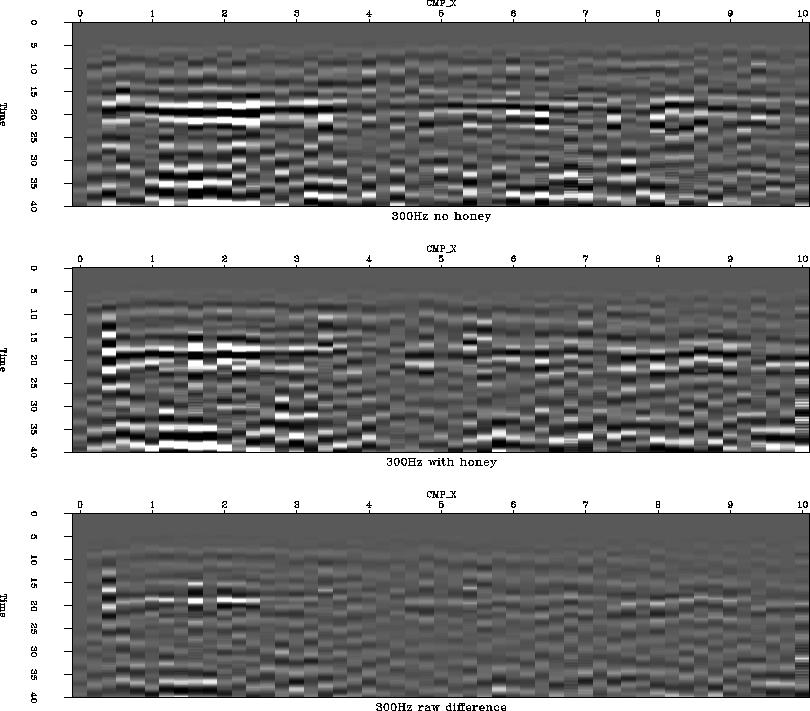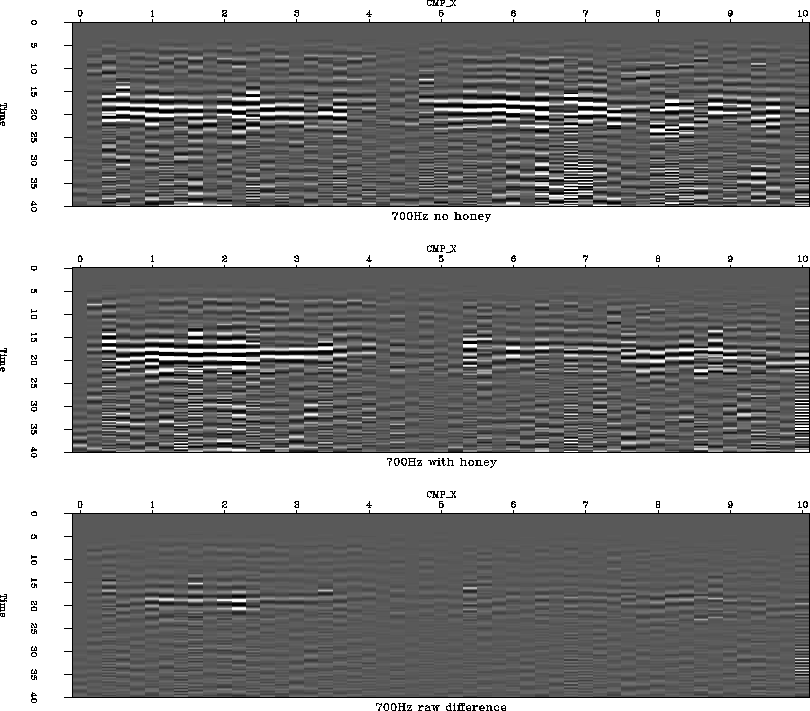 |
Figure 2 Stacked sections with high-pass filter (300 Hz) in processing flow. Left is no honey, center is with honey and right is raw-difference.
The processing flow applied to the data was as simple as possible to preserve amplitude information. It consisted of trace-edits, muting, bandpass filtering, normal move-out correction and stack.
The cross-equalization algorithm was applied to stacked sections with two different frequency contents. These correspond to different bandpass filters used on the shot-gathers to remove the ground-roll. Figures 2 and 3 show the stacked sections with different frequency contents, and their raw differences.
The honey was located between 5 m and 6 m on the CMP axis, and the water table reflector is clearly visible at 20 ms. However, any changes in the raw differences in the area where the honey was added are well below the signal-to-noise level on both sets of stacked sections.
 |
 |